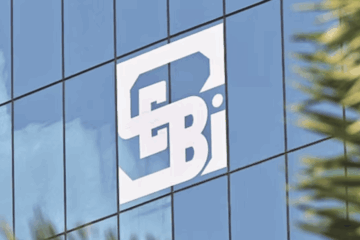Finance Accuracy Improves with HubSpot Xero Integration

Accurate financial data is the backbone of every growing business. When information is scattered between departments or handled manually, mistakes happen, and those mistakes can cost a lot of time and money. That’s where implementing HubSpot Xero becomes a game-changer. This integration helps businesses keep their sales and finance data aligned so everyone can work with confidence, using numbers they trust.
Understanding the Power of Integration
What Is HubSpot Xero Integration?
Implementing HubSpot Xero means connecting HubSpot’s powerful CRM with Xero’s cloud-based accounting software. This sync allows information to flow seamlessly between your customer relationship management and financial systems. Contacts, deals, invoices, and payment statuses all become unified, ensuring both teams operate from the same source of truth.
Why Integration Matters in Finance
Many teams still rely on manual data entry or operate in silos, leading to duplication, outdated records, or missed payments. When finance and sales systems aren’t talking to each other, it becomes harder to track revenue accurately. Implementing HubSpot Xero helps eliminate these problems by bridging the gap between two essential business functions, allowing information to move freely and automatically.
Real-Time Data Sync Enhances Accuracy
Eliminating Manual Data Entry
One of the biggest benefits of implementing HubSpot Xero is the removal of repetitive data entry tasks. When a sales deal is closed in HubSpot, the integration ensures that invoice details are automatically passed to Xero without requiring finance teams to enter them again. This greatly reduces the risk of typos or missed figures, helping ensure accuracy across all financial records.
Aligning Invoices, Payments, and Contacts
The integration goes beyond just syncing invoices. It also ensures that contact information, payment histories, and deal values are aligned in both systems. This means that customer profiles are always up-to-date and financial records reflect real-time transactions. By implementing HubSpot Xero, businesses ensure their records are accurate and consistent, no matter who views them.
Better Visibility into Customer Financials
Finance Teams Get Full Context
When financial teams have to chase down customer information from sales, it causes delays and miscommunication. Implementing HubSpot Xero gives finance teams full visibility into each customer’s journey, including deal size, status, and any relevant payment notes. This context helps them understand how to prioritise accounts and identify risks early.
Smarter Decision-Making from Unified Dashboards
Unified dashboards built from integrated data give leadership the insights they need to make confident financial decisions. Instead of toggling between systems or asking for status updates, everything they need is in one place. Implementing HubSpot Xero means stakeholders can see a real-time overview of both revenue and receivables, enabling better cash flow planning and forecasting.
Improving Sales and Finance Collaboration
Breaking Silos Between Departments
When sales and finance operate in separate ecosystems, collaboration suffers. Sales teams may close deals without understanding billing implications, and finance may follow up on overdue payments without knowing the sales context. Implementing HubSpot Xero creates a shared environment where both departments can work together with the same information, reducing tension and improving teamwork.
Triggering Workflows Based on Financial Data
The integration allows businesses to build automated workflows in HubSpot that are triggered by financial events in Xero. For example, a workflow can notify a sales rep when a client’s invoice is overdue, prompting a friendly follow-up. By implementing HubSpot Xero, businesses can create workflows that are more intelligent and responsive to financial changes, leading to faster resolution and improved customer relationships.
Reducing Delays in Revenue Recognition
Faster Invoicing from Closed Deals
Revenue delays often happen because there’s a lag between when a deal is closed and when it’s invoiced. Implementing HubSpot Xero eliminates this lag by triggering the invoice process immediately after a deal is marked as won. This shortens the revenue cycle, improves cash flow, and ensures revenue recognition happens without bottlenecks.
Minimising End-of-Month Surprises
Month-end can be stressful when departments scramble to reconcile numbers. By ensuring all invoice and payment data flows smoothly between systems, implementing HubSpot Xero means fewer surprises at the end of the reporting period. Finance teams can close books faster, and leadership can trust the numbers without delays or discrepancies.
How to Get Started with the Integration
Setting Up HubSpot Xero Integration
Getting started with implementing HubSpot Xero is simple with the right tools or connector. The process involves authorising both systems and configuring how data should sync—such as which fields to match and how often data should be updated. This setup only takes a short time but results in major time savings long-term.
Key Features to Configure First
When implementing HubSpot Xero, businesses should focus first on syncing contacts, deals, invoices, and payments. These areas offer the biggest benefits in terms of improving accuracy and efficiency. Once the basics are in place, teams can explore additional automation and custom workflows to fine-tune the integration to suit their operations.
Final Thoughts
Implementing HubSpot Xero is more than just a technical upgrade—it’s a strategic move toward better accuracy, efficiency, and teamwork. It allows both finance and sales teams to stay aligned, improves the reliability of your data, and speeds up processes that used to take days. For businesses ready to scale with confidence, this integration offers the visibility and control needed to make every financial decision count.










